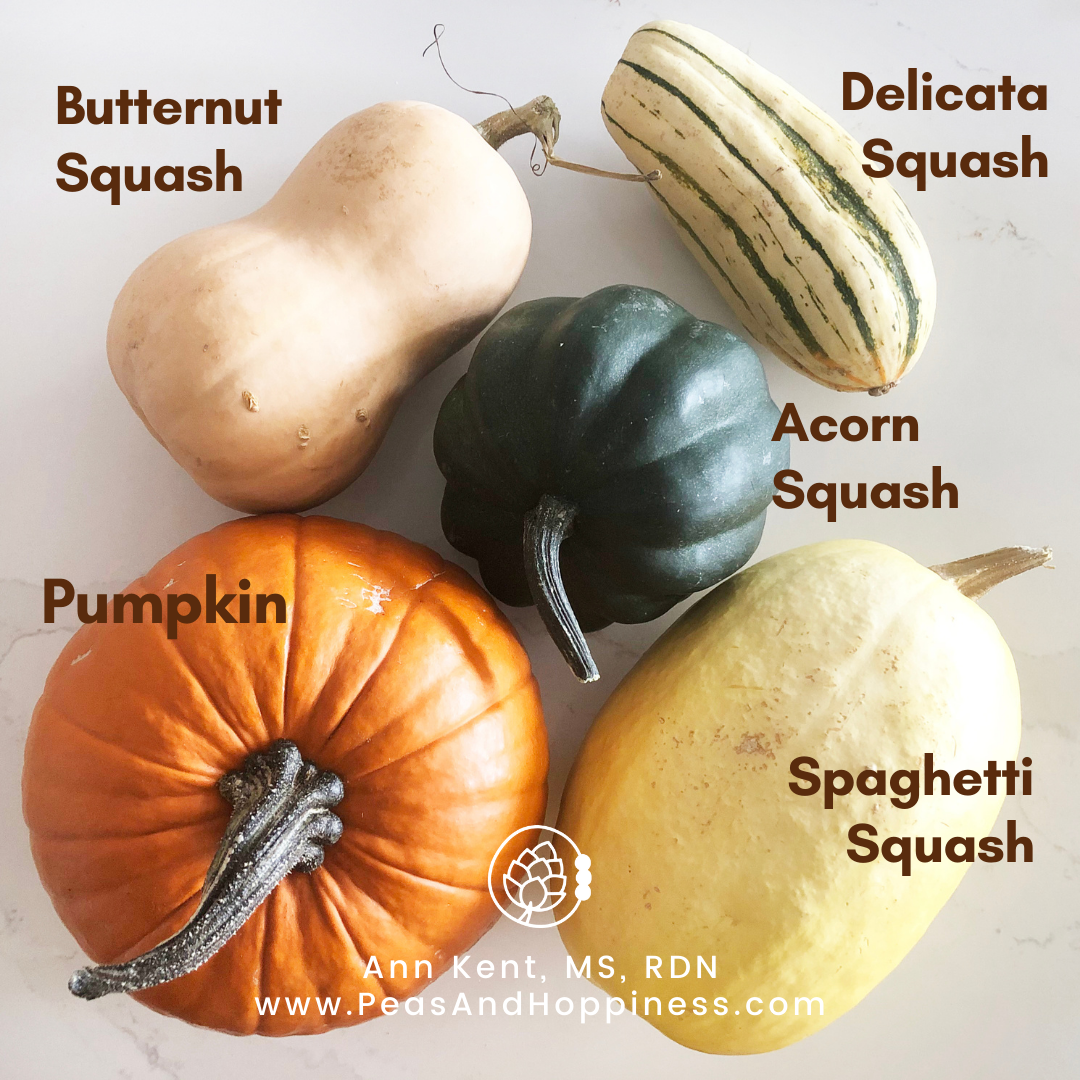Eating seasonal produce ensures you’re enjoying the tastiest, most nutritious produce available. Stock up on these squash to eat seasonally during the cold winter months…
The seasons are changing, the leaves are falling – which means that summer produce will soon be gone. We often think of winter as a barren wasteland for fresh, local vegetables – but it doesn’t have to be so!
In fact, now is the time to stock up on winter squash. Winter squash differs from summer squash because their thick outer rind protects the vegetables and keep them fresh for many months.
Download this FREE guide to seasonal vegetables to know what produce is freshest, tastiest, and most nutritious all year round!
It’s harvest time for these winter squash for your local farmers right now. Stock up on these five favorites and enjoy them all winter long.
Squash #1: Pumpkin
While used mainly as a decoration, small pumpkins are also a tasty alternative to canned pumpkin found in the grocery store. Look for pie pumpkins, which are much smaller than their jack-o-lantern brothers. These have more flesh inside their shell than larger carving pumpkins.
To cook, simply cut out the stem with a large knife, then cut in half lengthwise and scoop out the seeds. Roast the pumpkin halves in a baking dish at 400 degrees for about 45 minutes, or until flesh is very soft. [Watch a demonstration]
Once cooked, use a spoon to scoop out the flesh from the shell and use the flesh as you would canned pumpkin: in pies, muffins, or oatmeal. Try this Pumpkin Porridge or Pumpkin Spice Granola to start.
Don’t forget to save the seeds of the pumpkin – or also of the other winter squash on this list – which can be used to make a crunchy, savory snack. This recipe for Savory Roasted Pumpkin Seeds is so simple!
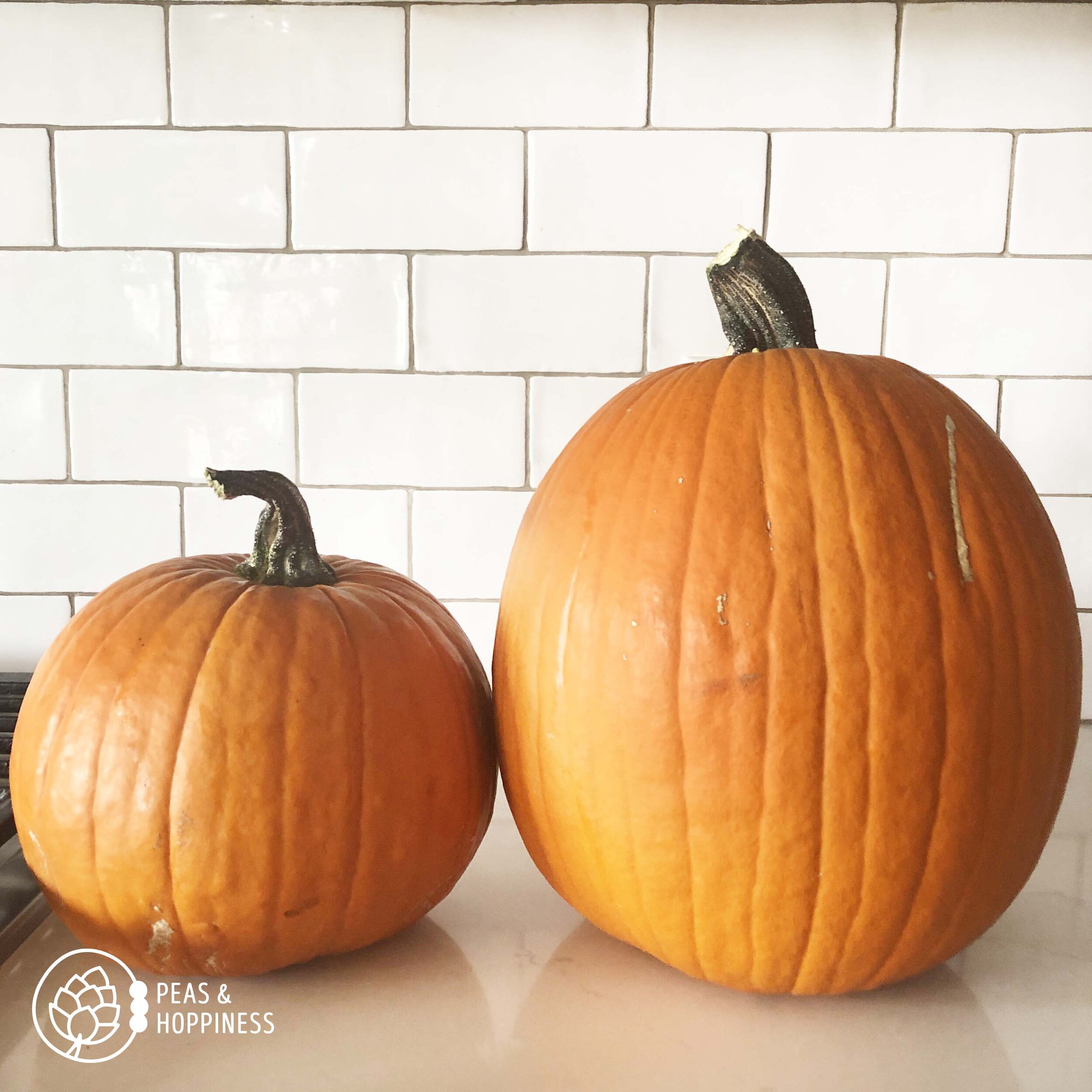
The pumpkin on the left is a pie pumpkin, which is good for cooking & eating. The one on the right is better for carving and has less flesh inside so isn’t as good for eating. Learn more about pumpkins
Squash #2: Butternut Squash
Butternut squash is one of my favorite winter vegetables; I even wrote a sonnet (or two) about it. It’s a sweet alternative to white potatoes and lower in carbs than sweet potatoes. I also love to use this vegetable in place of pumpkin in homemade pumpkin pie, as the texture is smoother and less stringy than roasted pumpkin.
To cook, peel the butternut squash using a vegetable peeler. Next, cut in half crosswise to separate the neck of the squash from the bell. Cut the bell in half lengthwise and scoop out the seeds. Cube butternut squash and roast in the oven, use in a soup, or try this Butternut Squash Mexican Skillet – a favorite of the Peas & Hoppy Meal Guide Members.
Squash #3: Acorn Squash
Acorn squash tastes much different than pumpkin and butternut squash. Unlike the first two vegetables, acorn has a milder taste which allows it to work as either a savory or a sweet dish.
To cook, cut acorn squash in half lengthwise and scoop out the seeds. Season with salt, pepper, and oil or stuff with dried fruit and nuts. Bake at 350 degrees for an hour to an hour and a half, until the flesh is soft. Scoop out the flesh from the tough shell to serve. [Watch a demonstration]
New to acorn squash? Try this Nuts & Bolts Acorn Squash, a favorite at our Thanksgiving dinner every year.
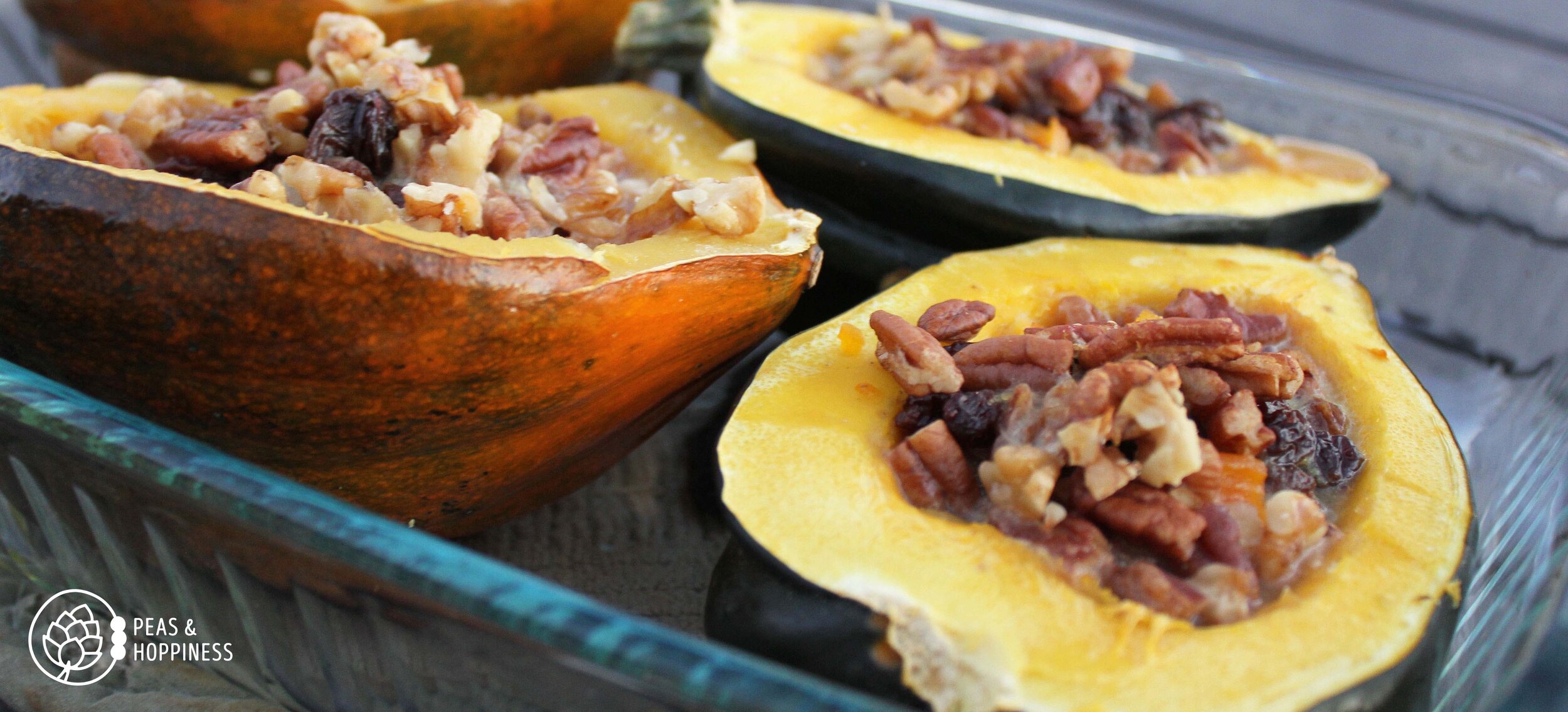
Try this delicious recipe for Nuts & Bolts Acorn Squash
Squash #4: Delicata Squash
One of the lesser-known winter squashes, delicata squash is named for its tender peel. Unlike other winter squash, the peel is also edible. Because of the softer peel delicata is easier to cut, so for those less comfortable with a chef’s knife this is a good squash to start with.
To cook, trim the stem and end of the squash and discard. Cut in half lengthwise and scoop out and discard the seeds; unlike the other squash these usually are smaller and not good to roast.
Cut into thin strips and season with oil, salt, and pepper. Roast at 425 degrees about 30 minutes, until starting to see some nice charring on the squash, stirring once during bake time to ensure even cooking. Toss with apple slices before roasting for a sweet version of this squash.
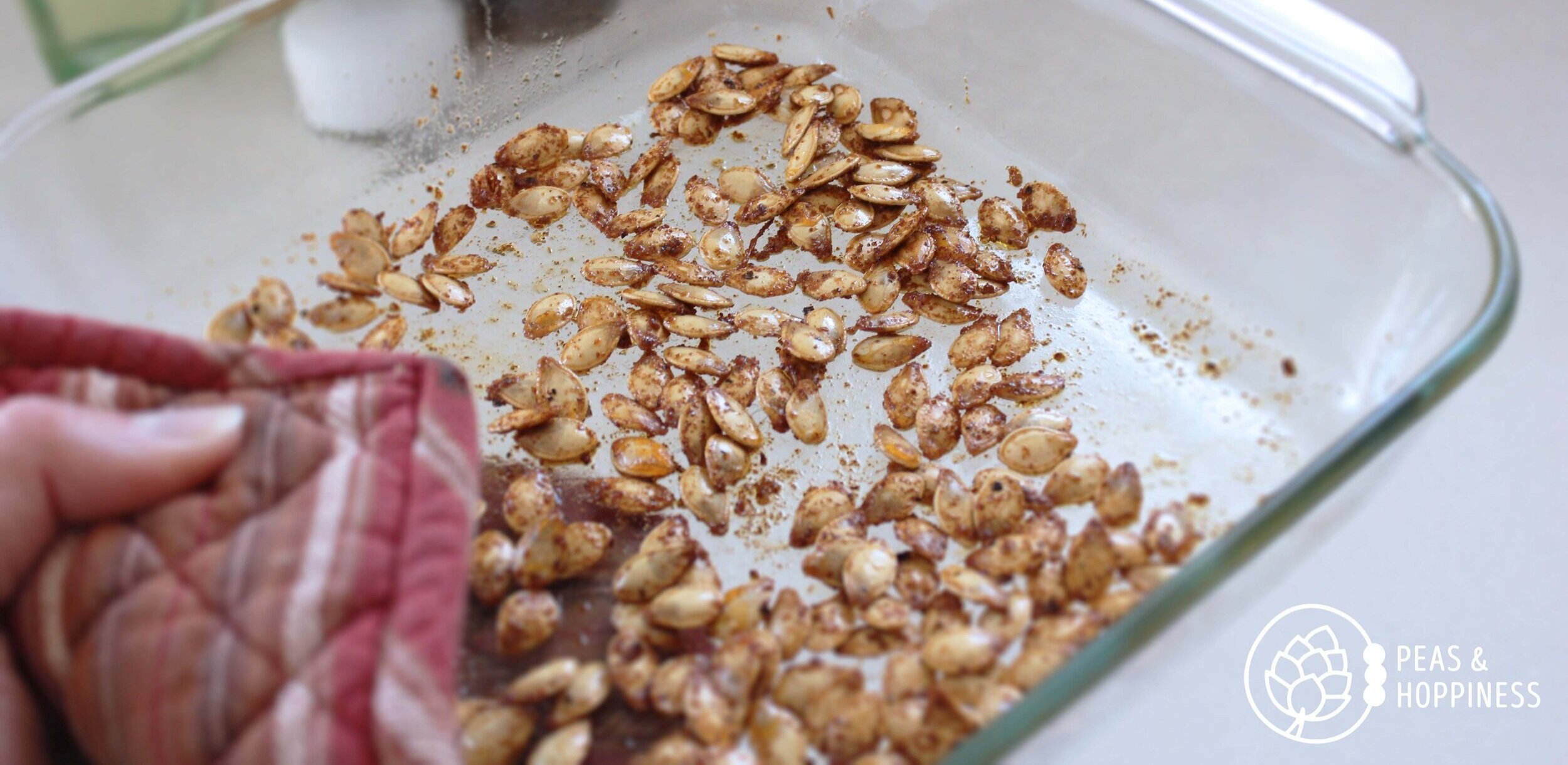
Instead of tossing the seeds of your winter squash, try this recipe for Savory Roasted Pumpkin Seeds
Squash #5: Spaghetti Squash
I think spaghetti squash is the most magical of all the squashes. Unlike zucchini noodles, there is no spiralizing necessary. Once cooked, the spaghetti squash flesh comes out in spaghetti-like strands: magic!
Older spaghetti squash can be VERY tough to cut before cooking; as such, instead of trying to cut the squash raw, poke (stab) the squash a few times with a fork, then roast, boil, or even microwave the squash until soft enough to cut in half. [Watch a demonstration]
Once soft, cut the squash in half lengthwise and scoop out the seeds, being careful not to remove any cooked flesh. Continue to cook until flesh is no longer crunchy. Remove spaghetti squash strands from the tough shell with a fork. Use squash in place of spaghetti in a variety of dishes, from traditional spaghetti & sauce – like in this Spaghetti Squash Italian Bake – to this tasty Greek Spaghetti Squash.
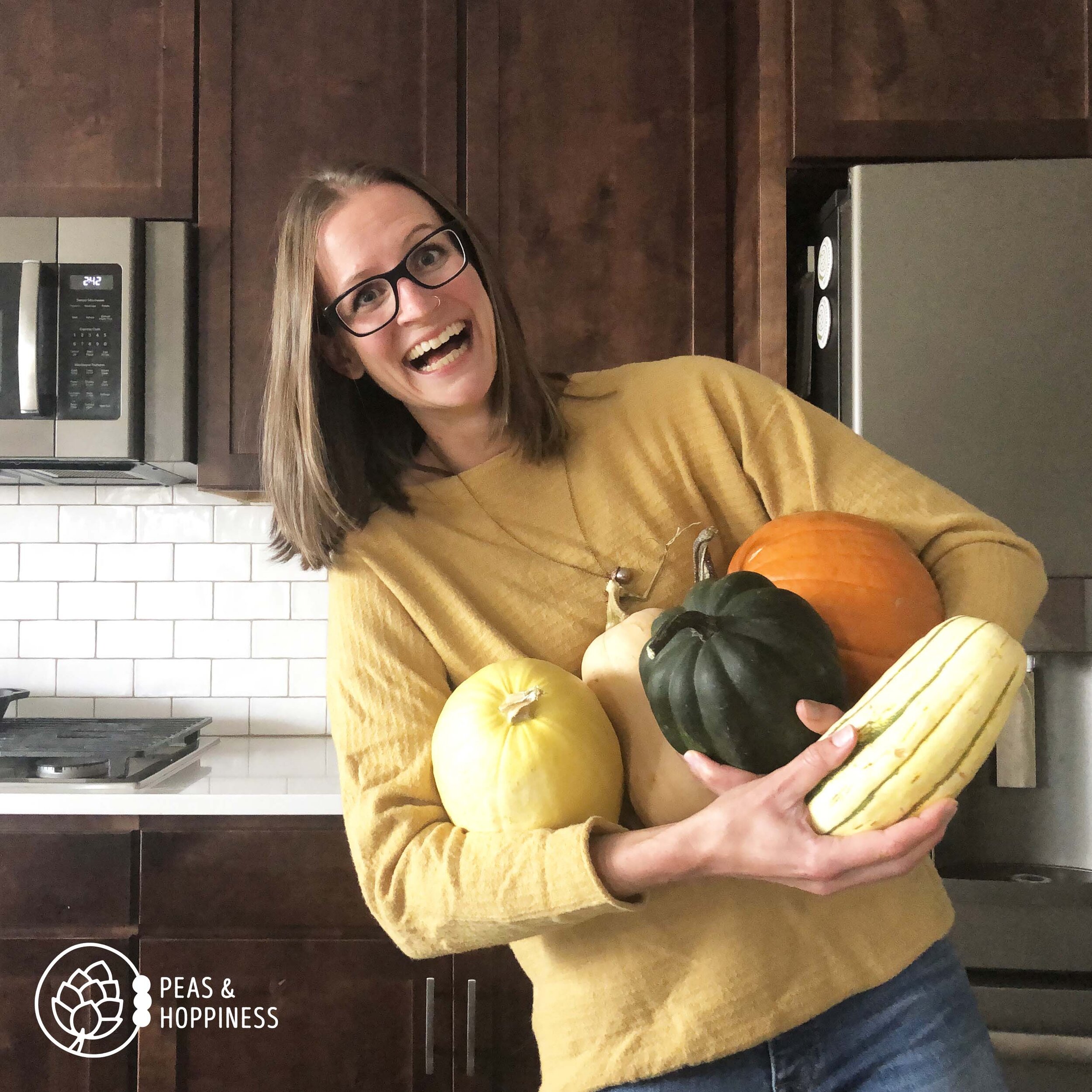
For more hilarious pictures of me with various vegetables, follow me on Instagram
Go Forth and Eat Seasonally
Including winter squash into your menu during the long cold months is a great way to continue to support local farmers outside of the usual growing season. Eating seasonally also reduces your carbon footprint by using what’s available instead of requiring foreign growers to ship produce across the globe.
Make sure to store your winter squash in a cool, dark, dry area and they’ll last all the way from fall until spring – when you’re ready to start eating greens again!
If you’d like help knowing what vegetables are in season and how to prepare them so they taste the best, download this free guide to seasonal vegetables. Support your local farmer, reduce food waste, and eat lower on the food chain with these seasonal, tested recipes to eat better for you and the planet.
Now, what are you waiting for? Head to your local farmer’s market and stock up on winter veggies before they’re all gone!
Happy eating,
Ann with Peas & Hoppiness
